Those old traditional kitchens of Kerala and its accessories have already vanished!
Kitchen is the powerhouse of a family, and there was a time when it was the most noisy area of a home. Noisy utensils, louder noises from kitchen, scrapping coconut voices and blowing fire using a iron rod – such noises were quite common those days. When joint families prevailed those days and as everything was done through manual efforts, it was the most restless area of a home. Most women were housewives those days, and men never entered to help their wives. Before gas stoves and induction cookers came into existence, kitchen was a smoky area and housewives were seen with teary eyes. Rarely did they complain those days, and they did everything as their duty. They rarely got free hours too, as they had to do a lot of manual efforts.
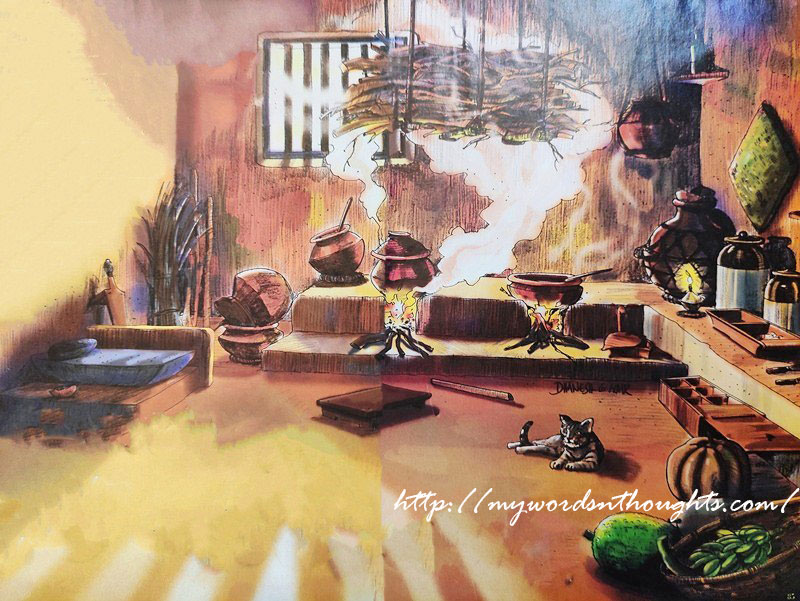
A trademark Kerala kitchen of old days, with wooden hearths, firewood and less-seen accessories of today
If we look back into those days, definitely sufferings of mothers come to our mind in first place, also a few nostalgic memories of our childhood days. If we overlook that ‘suffering’ factor, yes, our old traditional kitchen holds some kind of charm. Also food prepared in wooden hearths of old kitchen definitely tastes better. Those days have gone, and we can’t find those kitchens in our ‘modular kitchen’ days of today. No complaints. They are convenient for working women and things are arranged in small spaces in better way. We can’t bring those days back. Yet we can often think about the kitchen of 1980s or before.
Through this column let me try to bring some nostalgic moments back, which are never to return to past. Hope new generation kids will also like it. I am sure younger kids are definitely going to wonder with some of the unfamiliar things used yesterday. Such symbols used to be an integral part of Kerala’s culture and tradition once, used in every home and they deeply influenced contemporary writings and literature too. When we see old black & white Malayalam movies, mostly which deals with rural themes, we often get glimpses of such traditional kitchens, and how previous generation cooked food in earthen pots using wooden hearths.
The kitchen became a part of several old stories written by literals
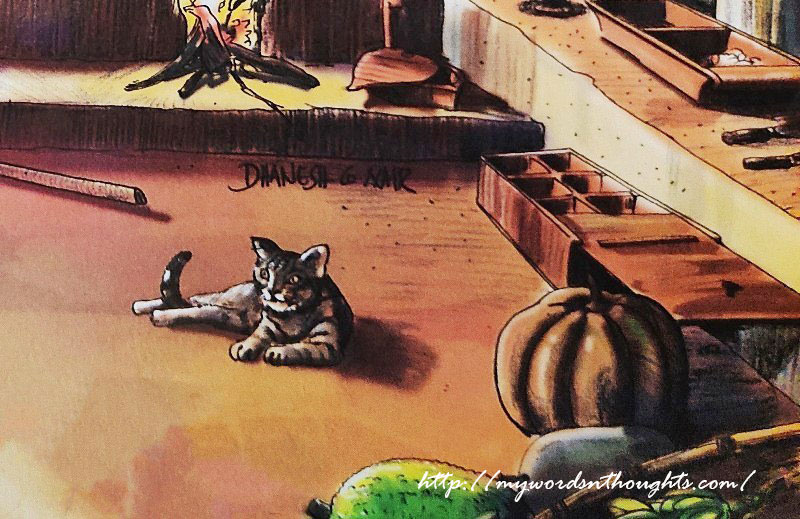
Pet animals are rarely seen in kitchen today
In M. T’s short story, ‘Karkkadakam’, there is mention about the tuber of banana (Vaazha Kizhangu) and simple dishes made using it. When Upperi made is using tuber of banana, rice is fried, powdered and added to it just before preparation. Then only the dish tastes better. There is also mention about Meenakshi Ettathi, the dining space, Congee and wooden stool in this short story, penned by Jnanpith Awardee.
During old days, kitchen was the ‘densely populated area’ of a home, and was never silent till late night. For the main reason, kitchen, utensils and simple dishes became a part of many rural stories and folklore. Kitchen often became a main character of many Malayalam stories, the space where entertainment and laughs were not common, but sorrows and tears were easily visible.
Malayalis have lost the old taste of dishes, so are old kitchens. Many of its equipment have already diminished from scene. Modern kitchen too has similar kind of dishes – thoran, avial, olan, kichadi, sambar etc. Yet taste is entirely different. If we start telling about kitchen, it is not going to end soon. Kitchen too had emotions – happiness, sadness and many other untold and unrecognized shades of emotions. Each kitchen had its own shades, colours, stories and emotions. Those smoky fumes used to draw their own stories and experiences on walls. But one thing is common. All walls were just dark!
Pet animals like cats and also hens always loitered around kitchen. Now people have moved away from the tradition of livestock – cattle farming, hen & eggs etc. As time passed by, we have changed a lot, and so are our kitchens and things in use. Old kitchens were constructed using mud and wood, and they have now been replaced by concrete walls and processed wooden shelves, windows and doors. Time is moving fast, and everything change with time. So are we, our needs, requirements, tastes and kitchen too! Those eco-friendly kitchen, close to nature is nowhere in scene.
Wooden hearths were powerhouses once
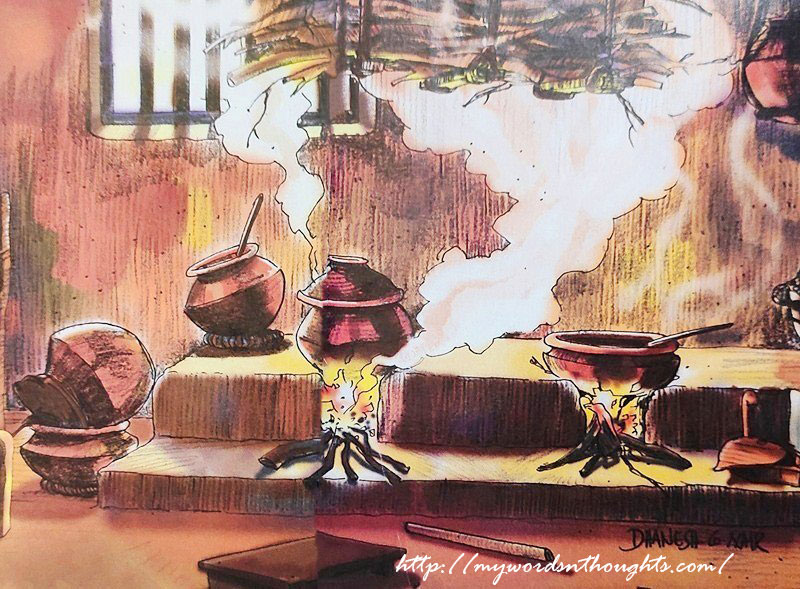
Wooden hearths – The centre point of attraction of any traditional kitchen
Definitely hearth is the centre of attraction of any kitchen, whether it’s made of mud or being replaced by stove. Hearth is the heart of the kitchen, where food is cooked. 50 years back, hearths were fixed on floor. Things slowly changed only after that. Just above wooden hearths, wood was hung on ceiling using ropes. Hearths were prepared using mud or soil those days. Later such muddy hearths were replaced using hearths burnt in kilns. We can place two pots in normal clay hearths, the first one with high flame, and the second one with low flame. You need to give flame to the direct hearth only, and the second one will get sufficient heat.
When sitting on floor and blowing fire became inconvenient, foreign style slabs came into existence. Hearths were placed on slabs, and the housewife can do everything in standing posture, and freely walking within the kitchen premises. Tasks turned easier, consuming less time. When concrete slabs were built in kitchen, the space of wood and twigs got changed. Space beneath the slab got reserved for wood. Also the space of grinding stone got changed. Earlier it was fixed on ground, and now on a corner portion of the slab. It became more convenient for women to stand and grind, while keeping an eye on the pots placed in hearth. As time passed by, grinding stone which was once an integral part of Kerala kitchen lost space from main kitchen. While a few of them found space in work area, some of them lost their homes forever!
If you go through old Malayalam books of primary classes, the word ‘Uri’ is quite common. In fact, the Malayalam alphabet got synonymous with this word for small kids, which means a domestic swing like structure used to hang things. (I couldn’t find a proper English word, I searched a lot). It’s exactly the same structure where Lord Krishna’s mother used to hang butter in earthen pots, to hide from little Krishna, and during Krishna Jayanti, breaking the pot tied in a pole is an integral part of Hindu celebrations.
Uri was hung in the ceiling (in wooden structures called Kazhukol in Malayalam) of thatched roof or tiles, when concrete homes were not so common. This multi-purpose utensil protected cooked food from cats, pests and other animals. Milk was also fermented (to prepare curd) and placed safe inside Uri. More than one pot can be placed one above another and usually hung away from hearths. Thatched palm/coconut leaves are also used to make traditional uris. Ropes were also used. A ring is fixed in the inner side to give extra strength.
In a joint home, there were 3 or 4 uris, and they were used regularly. It was an essential part of Kerala household then. Separate uris were hung for grains, spices and cooked food. This old time kitchen utensil used to store leftover food and grains has already vanished from kitchen almost two decades back. It has been now replaced with big-sized refrigerator which runs on electric power. It stores food for so many days. This is also convenient, isn’t it?
Wooden and palm leaf boxes to store spices and curry powders have disappeared
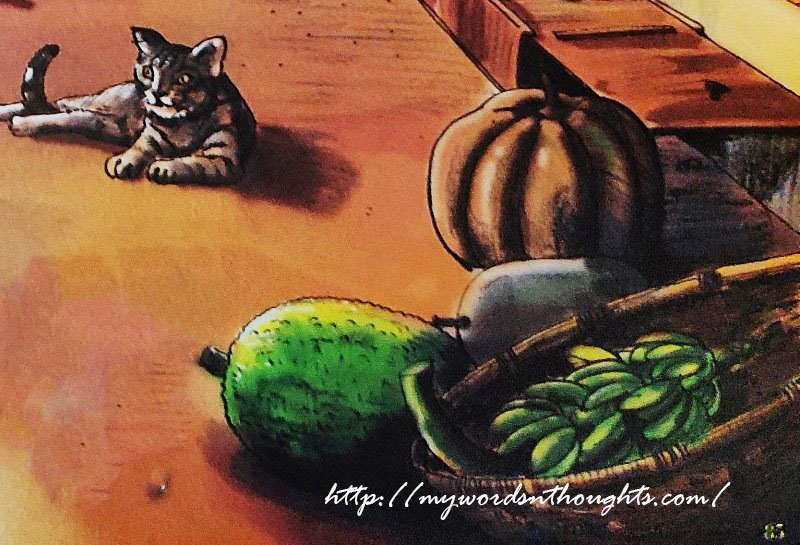
Vegetables were mostly cultivated in courtyard those days
During old days, boxes made from palm leaves were used to store grains, spices, powders etc. Instant curry powders were not in use back then. Chilli powder and coriander powder were once made at homes. Fresh chillies and corianders were ground for making fresh gravies too. Wooden boxes with columns (Arappan Petti in local terms) were used to store curry powders and fresh spices. When the housewife wants to grind something, she will take this box which contains different items.
As curry powders were manually prepared after drying spices at home, they stayed long. It was easy and convenient to use this box two or three decades back. Such boxes have disappeared from kitchen. Now shelves have replaced such pal and wooden boxes, where you can arrange boxes according to your convenience.
When earthen pots were common in use, rings were used to place them steady in one place without rolling. It’s locally called Valayam, Thiruvalayam etc. Coconut leaves are tied in round shape, and then wrapped using rope to prepare Thiruvalayam. Now also rings are common in modern kitchen. But those leaf rings have been replaced by steel ones.
To blow flame in wooden hearths, a hollow bamboo stick was common in use. It was known as ‘Venkuzhal’ those days. Later bamboo sticks got replaced by iron rods, which are durable. Still it was known by the same name. Now when wooden hearths are not common in use, what is the need of Venkuzhal?
Thudupp & Laami – Two common kitchen accessories back then
Do you still remember Thudupp – that wooden spatula of about 1.5 feet made using shuck of palm leaves? It was once a common item of Kerala kitchen. It was quite common in Tamil Nadu too. When you want to smash/mix cooked jackfruit or tapioca, Thudupp is used for this purpose. It was so cheap, light weighted and easy to use too. Thudupp is made from shuck, after removing the palm leaves, and well finished too. I don’t think Thudupp is available in present day market, and modern housewives are not familiar with its usage. They don’t know how to handle it, and when palm trees are disappearing, where can we find Thudupp? When daughters turn naughty or disobedient those days, mothers used to take ‘Thudupp’ in hands, do you remember? At least she would say, “I will take thudupp in my hands”.
Yet another similar item is Laami, also called Laavi or Chottu Laavi in certain places. It was used to strain water from cooked rice. It was mainly prepared from thin bamboo sticks, and was convenient to use. It never gets heated easily and hence convenient to use. Now perforated steel plates have replaced laaamis. Steel plates are durable.
Earthen pots were used to prepare those days. They were available in different measurements and sizes. Spatulas and spoons were made used using coconut shells and spathe of aracanut leaves. In fact spathe of palm leaves was a multi-purpose item, used as lids to close pots and different accessories were made from it, which were indeed very cheap. Now such spoons and spatulas have been replaced with steel and fiber, and pots have changed to ceramic and non-stick too.
Kitchen provided best exercises for housewives
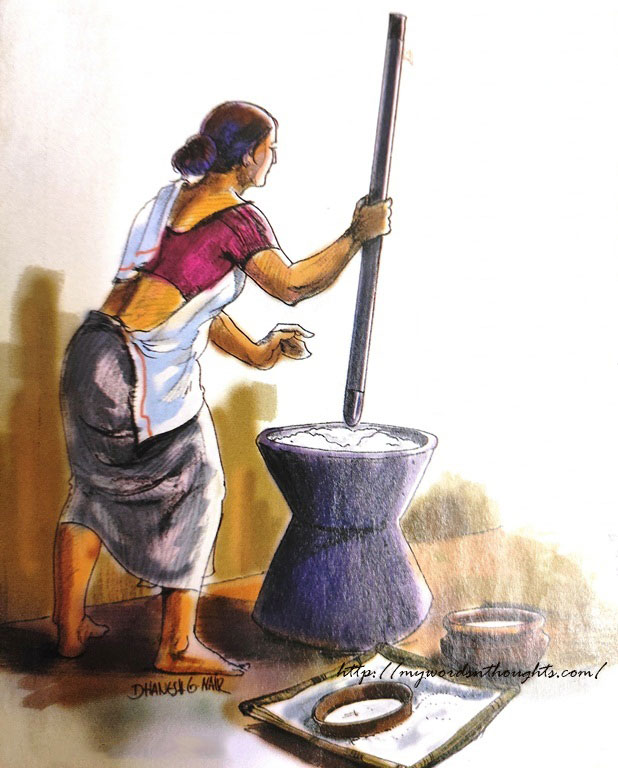
A lady using grinding stone and pestle to prepare flour
A kitchen was not short of a gymnasium back then. Stone grinders were used to powder and grind items. When gravy for coconut added curries and thorans were made by grinding in grinding stones (Ammi & Kuzhavi) it tastes better, and gives manual exercises to ladies. Stone mortars and pestles (Ural & Attukallu) were used to prepare batter of dosa and idli. Wooden & long pestles (Ulakka) were used for pounding rice and other grains.
Thiruvakallu to powder rice and green gram, Aattukallu for preparing batter, Idikallu (small grinding stone) to crush beetle leaves and aracanut (now also used in modern kitchens), Ammi & Kuzhavi to prepare gravy for curries – all these kitchen accessories acted as gym equipment too. Now health clubs have replaced such manual efforts in kitchen. Now most of the ladies are working and financially supporting the families, and hence we should move on, instead of sticking on to nostalgic moments. I have added one similar article most recently, supporting the changes of modern society. Should we really compare moms of today with yesterdays? Please have a look.
‘Ammi Kothaanundo’ – In rural areas, such calls (mostly of tribal people) were quite common, and they carry certain iron ‘weapons’ to perform their job. They used to prick holes in grinding stones (Ammi & Kuzhavi). When holes are made, grinding process becomes easy. When we regularly use the grinding stone, such holes will slowly disappear, and hence a group of people was active in this job. They were paid cheap too. I don’t think kids of today will believe such ‘stories’, tales of people who prick your grinding stones with sharp weapons.
Only banana leaves and earthen pots/plates were used to serve food. Now food is served in earthen pots in 5-star hotels only. Earthen plates slowly modified into steel & aluminium plates, now have turned to beautiful and decorated ceramic and glass plates & bowls too. Now different types and colours of plates are available in market.
Old kitchen preserved the health of women to some extent. Yet we can’t forget the fact that, when housewives sank in the smoke of kitchen those days, they forgot to live their lives fully, and no one was there to listen their sorrows. Comforts have reached our footsteps in many ways, not just kitchen. We should never forget that. Yet we can’t admit the fact that old kitchens were more eco-friendly, with less use of plastic, and better waste processing system, when remains were used for kitchen garden or to prepare fuel (biogas which slowly became a part of Kerala kitchen). Old kitchens never harmed or polluted our eco system and atmosphere. Old mothers were familiar with the technique of converting kitchen waste to garden manure.
No dining tables and chairs those days
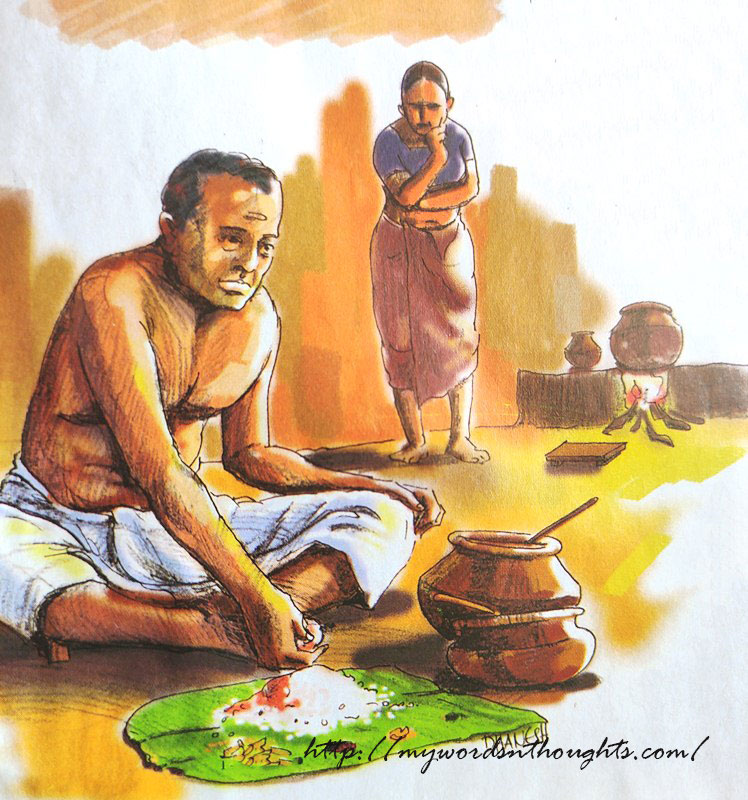
Food was served on floor, even in rich families those days, and was seen as a part of tradition
During glorious yesterdays, meals were served on floor. Usually male members of joint family assemble at a place, sit together and have meals. It was a fun time too. It’s not just the case of Kerala. As per Indian tradition, food is served on floor, and people sit with folded legs to eat food. Later small palm mats were spread on floor, locally called Thadukk. Thadukku got replaced by stools with less height (Korandi Palaka) later. Also read: How our ancestors linked old sayings with our life style, the facts which are relevant even today.
Thadukku had a little height, which makes sitting process easy. Later Thadukku got replaced by bench and desk, and also table and chairs, and now fully replaced by dining tables. Still debates are going on, if sitting on floor with folded legs is good for eating habits or not. Studies suggest, this posture is good according to human’s body structure. Now also there is one famous place without dining table, and food is served on floors – Kavadiyar palace of Thiruvananthapuram, where royal members of Travancore kingdom stay.
Everything in Kerala kitchen has changed, except one thing – grate (Chirava) used for scrapping/grating coconut. As long as coconut forms a part of Kerala dishes, grate is here to stay. Its length has reduced significantly. Earlier the grate was fixed in a wooden seat, and now it is fixed somewhere in the slab of work area. Earlier the person had to sit on Chirava to grate coconut, and now she simply stands.
Well was an integral part of kitchen those days. Women draws water from well, and hence it was normally dug in the backyard, where kitchen is located. Now also well is very common, but mostly not near to kitchen. It is constructed on front or rear end of home, not mandatory that it should be near to kitchen. In some kitchens, people can draw water while standing inside kitchen itself. Pulleys and ropes were common in use those days. The spathe of aracanut leaves were bind perfectly and used as bucket to draw water. Later it got replaced with aluminium and steel buckets. Now all such manual efforts have been replaced by electric motor pumps. Pulleys were initially made using wood, and later using iron and other metals. Now pulleys are not common in use, and only used during emergency situations when your motor pump is not working or without electricity.
Uppu Marava – An instrument made of wood used to store salt solution. Iodized salt came into market, may be in the late 1980s or early 1990s, and now everyone prefer to use powdered salt. Till then people used crystal salt in kitchen. Women mix salt with water and use this solution for dishes. Uppu Marava was one such common accessory used in kitchen to store salt solution. Bharani, of different measurements usually used to store pickles for long time, earthen pots and jars (kooja) to store cold water, Kindi, Montha etc are now distant from modern kitchen. Only a very few kitchen own such accessories now.
Kitchen has changed a lot, and so is the taste of food. Yet if we try to bring at least a few old traditional kitchen accessories back, we can retain at least a few of those lost tastes. Long before Malayalis started eating poisonous vegetables, we had kitchen garden, where at least a few vegetables were grown. Organic kitchen waste was used to grow them, which returned good health in return. Seeds were stored on kitchen walls. Dry seeds were wrapped in cow dung and fixed on kitchen walls. During monsoon season, those seeds were sown. Even if fertilizers and manures are not given, they grew healthy. Such vegetables owned good quality and taste too.
Muram (sieve) was also common in old kitchen, which was mainly used to separate stone from rice. When old families had their own paddy fields, they frequently had to sieve rice to remove husk and stone from rice before using. Now we have less paddy fields, and we get rice from supermarkets free of stones. So now the space of sieve is the upper part of store room, which is specially reserved for less used things. Kitchen was the soul of every home, and sorrows and complaints were given quick remedies when food was served at a corner of kitchen. When old kitchens vanished, that culture also said good bye.
The kitchen which laughed and cried with its mates
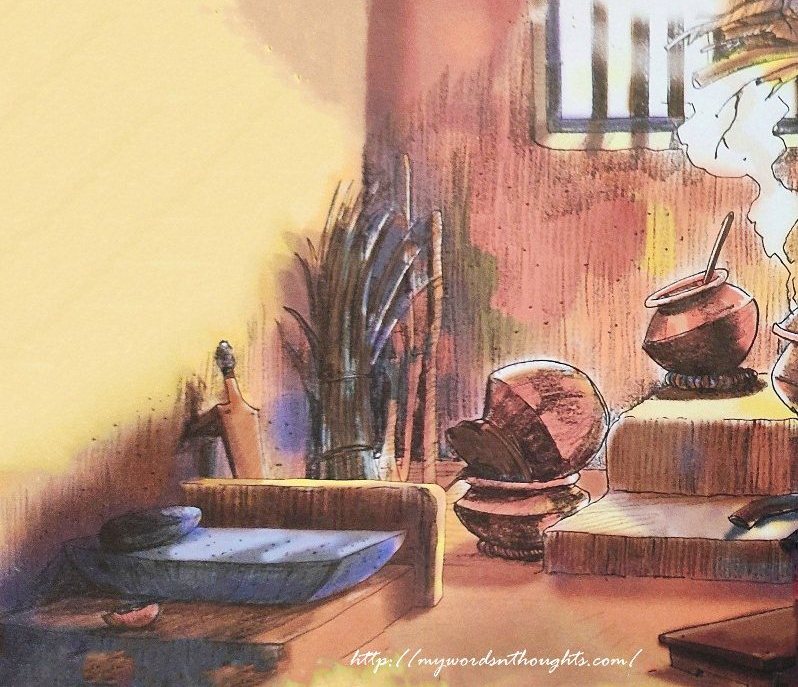
Traditional grinding stone, firewood, Chirava, earthen pots etc
Kitchen also had a soul and deep emotions. In Namboodiri Illams (homes of Brahmins), cow dung was used for floors every day, and it was seen as the sign of purity. People used to enter kitchen only after this process. Old people say, never alienate & hurt kitchen or make it feel bad. Hurt kitchen will never light hearths with flames, instead fill them with fumes. Hearths were once lighted only after prayers. Now also when feasts are conducted, Kerala lamp is lighted first and then only hearths.
Measurements and ingredients of Kerala dishes have also changed over time. Decades back, people used to store pickles, kondattam, chutney powders and Kurukk Kalan for many months. Tastes have also changed significantly, when wooden hearts and stone grinders got replaced by stoves and mixer grinders.
Now all members dine together in a dining hall. During the days of male supremacy, women were not allowed to sit with men to dine. Women usually eat only after serving men and children, and in most cases, they use kitchen as dining hall. Either they eat more to avoid waste (when refrigerators were not in use) or they didn’t get enough food after feeding everyone. Those were days of poverty too.
Old kitchens were the silent witnesses of sadness, agony, loneliness and tears, which housewives frequently faced. They couldn’t respond, but they silently listened. When housewives were alone in kitchen, they used to talk to kitchen walls about their sorrows, as no one else was willing to listen to their words. Old kitchens might have cried a lot, witnessing all those injustice. Poverty, diseases, domestic violence and personal agonies; old mothers used to burn as wooden hearths inside the lonely kitchens. Most of them didn’t even expect anything in return; yet tried to fill smiles in the lives of everyone around them.
When sorrows outburst as tears, spectators failed to judge if it was smoke of kitchen or true tears. Famous writer Balachandran Chullikadu once wrote – banana leaf was broiled under flame and sorrows were wrapped inside. Kitchen has become one of the main characters of many Malayalam movies, mostly which deals with daily day lives and rural themes. Movies of Sathyan Anthikad and Sreenivasan team have featured Kerala’s kitchen as characters multiple times. Kitchen is a true reflection of the family and the bonding of its members. When family dramas are told on screen, kitchen becomes an integral part of the script.
Kitchen was once a culture which stayed closely connected to the family and its beings. We may now wonder how joint families with 10 and 20 members existed in Kerala under a single roof, a few decades back. Despite minute personal indifferences, they stayed together, helping each other. When kitchen went far away, so are relations and bonding between.
Do men enter in kitchen?
Till few decades back, only job assigned for ladies was house chore. They were not given permission to study or work outside. It was man’s duty to earn for the family, while kitchen work was exclusively reserved for women. Except to eat food, men never entered kitchen long ago. It was once a big space, where mother, grandmother, sisters and maids reside, and men never peep inside. If any man happens to enter kitchen, he may face wrath from senior ladies, who may ask, “What’s your job here?” Now those broad kitchens have reduced to small rooms, while living rooms have turned large.
Chimney and kerosene lamps are no more
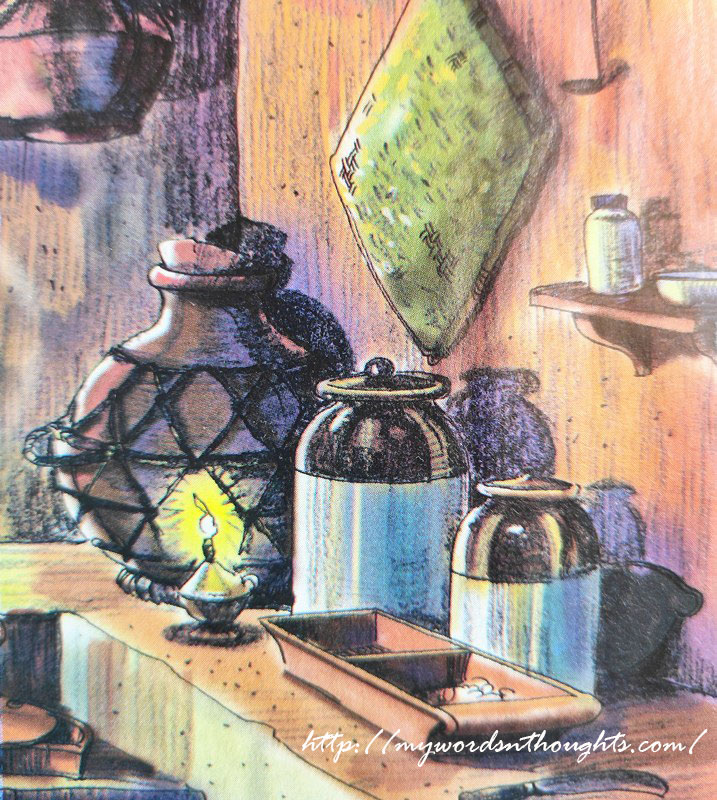
Muram, Bharani, small bottles, earthen pots kept in rings, Arappan Petti, Uri and Kerosene lamp – True picture of old kitchen
There was a wooden chimney just above the wooden hearths those days. They always remain open. It allows smoke to flow outside, and during early mornings sunlight enters the room through this chimney and falls on floor as beams – the ray of hope for those distressed souls!
Kerosene lamp was an absolute need for kitchens of yesterdays. Either the home had power supply or not, such lamps were mandatory, and they were available in different designs. Even when the whole house slept, a kerosene lamp was lighted at the kitchen of old days. Vegetables and tubers cultivated in the courtyard – jack fruit & seeds, banana, moringa leaves, colocasia and yam were once frequent companions of Malayalis once.
One thing has not changed that much – kitchen is always busy, yesterday and today. Yet people rarely laugh in kitchen those days, as fun may disrupt measurements of ingredients used for cooking. It can change taste, which can also result scolding from male members. So extra care is needed while preparing dishes. Also, people were punctual, and dishes are to be served at the right time.
In those days, people used to misjudge ladies who laughed too much. Indian society always wanted silent and obedient women, who are excellent in handing household activities. They were expected to do nothing else, just to remain as shadows of men. Now ban on laughing of women has been lifted, both in kitchen and society. Laughing doesn’t affect the taste of dishes any more.
Old kitchens were true reflections of mother’s mind too, just like a mirror. If she is mood off and her mind is upside down, it reflects best in the dishes which she prepares. When her mind fills with happiness, the taste of dishes also overflows. Writer Punathil Kunjabdulla once wrote – Kitchen is like a prison to moms. They never leave those jails, even for parole. He was absolutely true! The day since she is born as a girl child, she holds the responsibility of performing house chore, look after family and prepare dishes for them.
In many cases, with empty or half-filled stomach, mothers brought up their kids. In most of the families, couples had 4 or more kids. Yet the mothers toiled throughout their lives for upbringing her kids. When kids reach good positions, they should never forget the sacrifices of their moms during their heydays. If so they will never manage to get over the curse, which mom’s tears bring to them.
Now also everybody say, mom’s dishes and its taste are the best in this world, no comparisons. Whenever we think about the taste traditional dishes, mom’s mother comes to mind. If we are away from homeland, nothing more to say! Kitchen, its accessories and way of cooking play an important role in this case. It also shares many nostalgic moments of yesterdays. Even if those days were not financially fine, and most days were spent in poverty, still many people love those childhood and younger days, when food and dishes were so scarce.
Earlier during teens girls started learning cooking and also turn responsible in house chore. Now girls start their cookery classes, soon after her marriage is fixed. But I assure you, girls of today are fast learners too. They spent their childhood, teens and early youthful days in studies, and she is career oriented. Later she takes easy cooking classes, and learns everything. Yesterday or today, certain things never change. Even if she goes to office, she knows her responsibilities. Yes, like a modern kitchen which is fast in everything, she is also growing fast, matching with the new technologies. I see it as a positive change, women’s attitude to pursue her dreams and to financially support the family.
Let us also move with course of time, which keeps changing. Certain things are bound to happen while a few others are never to return. They were good for times behind, and for the time beyond let us explore new findings.
End note: I have prepared this nostalgic article based on an article published in Vanitha Magazine, a few years ago. I have also taken photographs of the paintings used for the article. So the drawings are fully credited to the artist. Hats off to that wonderful artist, who painted my childhood memories and imaginations so beautifully! I would like to point a mistake in one of the above pictures. While serving food on banana leaf (Thumpila), the tip of the leaf should point towards the left hand. In this picture, it is drawn just opposite. I wish I could tell about this to the artist. Full credits to the artist once again, thank you.
Also read a few more posts related to Kerala cuisine. Here is the page link. Click on the images to read


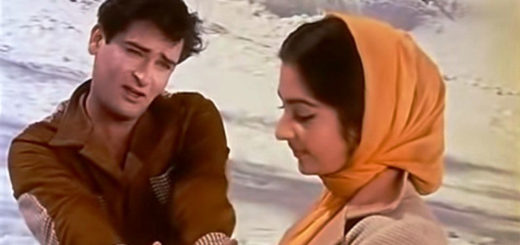






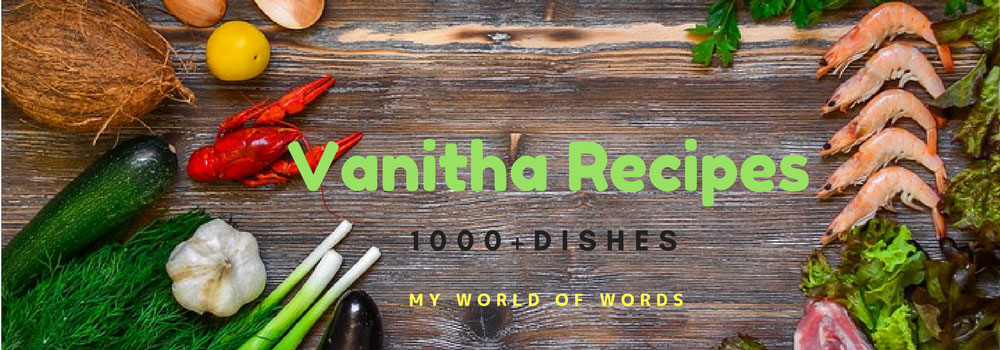
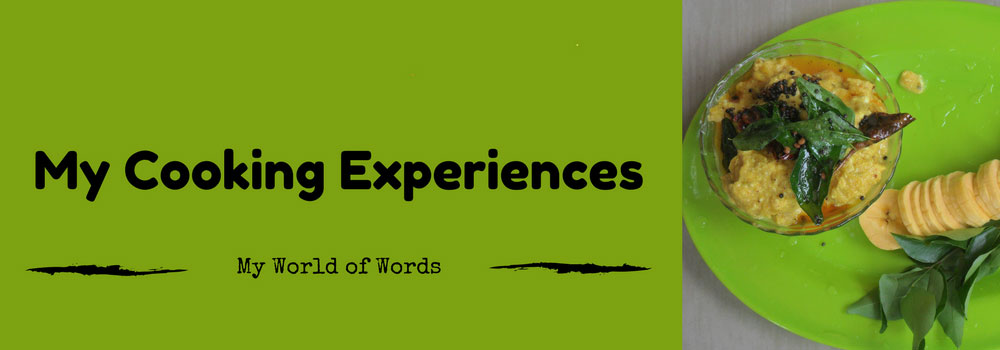


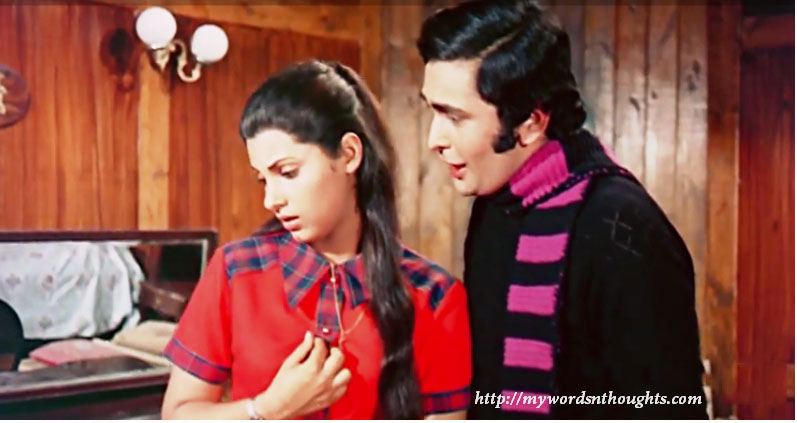
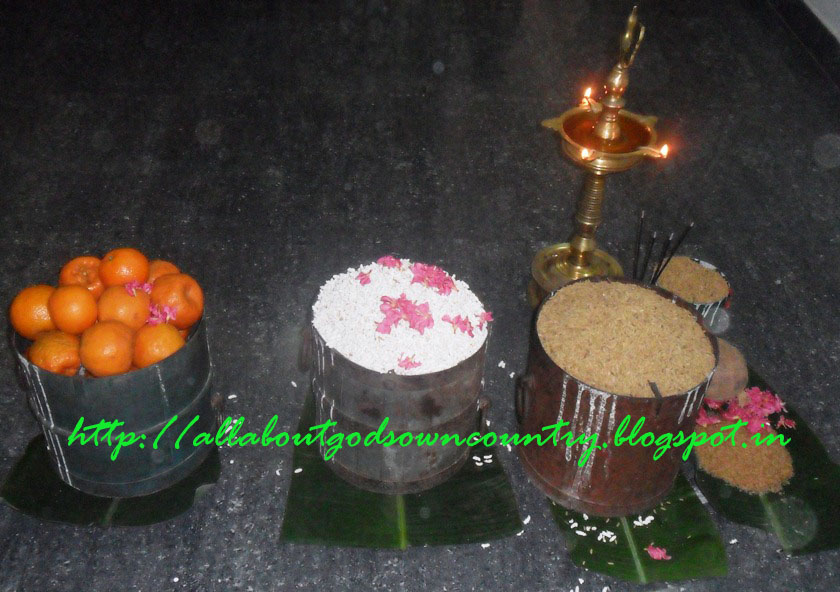
Hi Sandy,
I enjoyed reading your post about the old traditional Kerala kitchen and accessories. I found it very useful in understanding the past days of my grandparents and great grandparents, who were all from Kerala. Thank you for taking the time and effort to illustrate and show the different items you have described in your post.
Thank you 🙂
Nice write up.
But the allusion that women were silent sufferers inside kitchen is largely misportrayal. In Kerala marumakkathayam was dominant and women were outspoken, bold and capable.
You don’t find old women wallflowers. I am yet to see an old woman who did not have strong personality. Women as inferior is abrahamic concept and such notion became prominent only with advent of those religions and their influence through islamic/british rule.
They had opinions and were not averse to expressing them.
Punathil Kunjabdulla’s experience or islamic injunctions of purdah need not be considered universal.
Best Regards